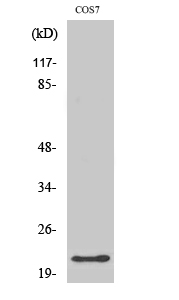Total GCG Cell-Based Colorimetric ELISA Kit
- Catalog No.:KA3273C
- Applications:ELISA
- Reactivity:Human;Mouse;Rat
- Gene Name:
- GCG
- Human Gene Id:
- 2641
- Human Swiss Prot No:
- P01275
- Mouse Swiss Prot No:
- P55095
- Rat Swiss Prot No:
- P06883
- Storage Stability:
- 2-8°C/6 months
- Other Name:
- Glucagon [Cleaved into: Glicentin;Glicentin-related polypeptide (GRPP);Oxyntomodulin (OXM) (OXY);Glucagon;Glucagon-like peptide 1 (GLP-1) (Incretin hormone);Glucagon-like peptide 1(7-37) (GLP-1(7-37));Glucagon-like peptide 1(7-36) (GLP-1(7-36));Glucagon-like peptide 2 (GLP-2)]
- Detection Method:
- Colorimetric
- Background:
- function:Glicentin may modulate gastric acid secretion and the gastro-pyloro-duodenal activity. May play an important role in intestinal mucosal growth in the early period of life.,function:GLP-1 is a potent stimulator of glucose-dependent insulin release. Play important roles on gastric motility and the suppression of plasma glucagon levels. May be involved in the suppression of satiety and stimulation of glucose disposal in peripheral tissues, independent of the actions of insulin. Have growth-promoting activities on intestinal epithelium. May also regulate the hypothalamic pituitary axis (HPA) via effects on LH, TSH, CRH, oxytocin, and vasopressin secretion. Increases islet mass through stimulation of islet neogenesis and pancreatic beta cell proliferaton. Inhibits beta cell apoptosis.,function:GLP-2 stimulates intestinal growth and up-regulates villus height in the small intestine, concomitant with increased crypt cell proliferation and decreased enterocyte apoptosis. The gastrointestinal tract, from the stomach to the colon is the principal target for GLP-2 action. Plays a key role in nutrient homeostasis, enhancing nutrient assimilation through enhanced gastrointestinal function, as well as increasing nutrient disposal. Stimulates intestinal glucose transport and decreases mucosal permeability.,function:Glucagon plays a key role in glucose metabolism and homeostasis. Regulates blood glucose by increasing gluconeogenesis and decreasing glycolysis. A counterregulatory hormone of insulin, raises plasma glucose levels in response to insulin-induced hypoglycemia. Plays an important role in initiating and maintaining hyperglycemic conditions in diabetes.,function:Oxyntomodulin significantly reduces food intake. Inhibits gastric emptying in humans. Suppression of gastric emptying may lead to increased gastric distension, which may contribute to satiety by causing a sensation of fullness.,induction:Glucagon release is stimulated by hypoglycemia and inhibited by hyperglycemia, insulin, and somatostatin. GLP-1 and GLP-2 are induced in response to nutrient ingestion.,miscellaneous:In the glucagon antagonist, His-53 and Phe-58 are missing. This antagonist has been successfully utilized to reduce glucose concentration in vivo.,online information:Clinical information on Eli Lilly glucagon products,pharmaceutical:Available under the names Glucagon (Eli Lilly) and GlucaGen or Glucagon Novo Nordisk (Novo Nordisk). Used to treat severe hypoglycemia in insulin-dependent diabetics.,PTM:Proglucagon is post-translationally processed in a tissue-specific manner in pancreatic A cells and intestinal L cells. In pancreatic A cells, the major bioactive hormone is glucagon cleaved by PCSK2/PC2. In the intestinal L cells PCSK1/PC1 liberates GLP-1, GLP-2, glicentin and oxyntomodulin. GLP-1 is further N-terminally truncated by post-translational processing in the intestinal L cells resulting in GLP-1(7-37) GLP-1-(7-36)amide. The C-terminal amidation is neither important for the metabolism of GLP-1 nor for its effects on the endocrine pancreas.,similarity:Belongs to the glucagon family.,tissue specificity:Glucagon is secreted in the A cells of the islets of Langerhans. GLP-1, GLP-2, oxyntomodulin and glicentin are secreted from enteroendocrine cells throughout the gastrointestinal tract. GLP1 and GLP2 are also secreted in selected neurons in the brain.,
- Function:
- regulation of peptide secretion, cell surface receptor linked signal transduction, G-protein coupled receptor protein signaling pathway, intracellular signaling cascade, behavior, feeding behavior, cell proliferation, response to endogenous stimulus, response to hormone stimulus, hormone-mediated signaling, response to organic substance,cellular response to hormone stimulus, regulation of hormone secretion, regulation of insulin secretion, regulation of secretion, regulation of cellular localization,
- Subcellular Location:
- Secreted .; [Glucagon-like peptide 1]: Secreted .
- Expression:
- [Glucagon]: Secreted in the A cells of the islets of Langerhans. ; [Glucagon-like peptide 1]: Secreted in the A cells of the islets of Langerhans (PubMed:22037645). Secreted from enteroendocrine L cells throughout the gastrointestinal tract (PubMed:22037645). Also secreted in selected neurons in the brain. ; [Glucagon-like peptide 2]: Secreted from enteroendocrine cells throughout the gastrointestinal tract. Also secreted in selected neurons in the brain.; [Glicentin]: Secreted from enteroendocrine cells throughout the gastrointestinal tract.; [Oxyntomodulin]: Secreted from enteroendocrine cells throughout the gastrointestinal tract.
- June 19-2018
- WESTERN IMMUNOBLOTTING PROTOCOL
- June 19-2018
- IMMUNOHISTOCHEMISTRY-PARAFFIN PROTOCOL
- June 19-2018
- IMMUNOFLUORESCENCE PROTOCOL
- September 08-2020
- FLOW-CYTOMEYRT-PROTOCOL
- May 20-2022
- Cell-Based ELISA│解您多样本WB检测之困扰
- July 13-2018
- CELL-BASED-ELISA-PROTOCOL-FOR-ACETYL-PROTEIN
- July 13-2018
- CELL-BASED-ELISA-PROTOCOL-FOR-PHOSPHO-PROTEIN
- July 13-2018
- Antibody-FAQs
.jpg)


